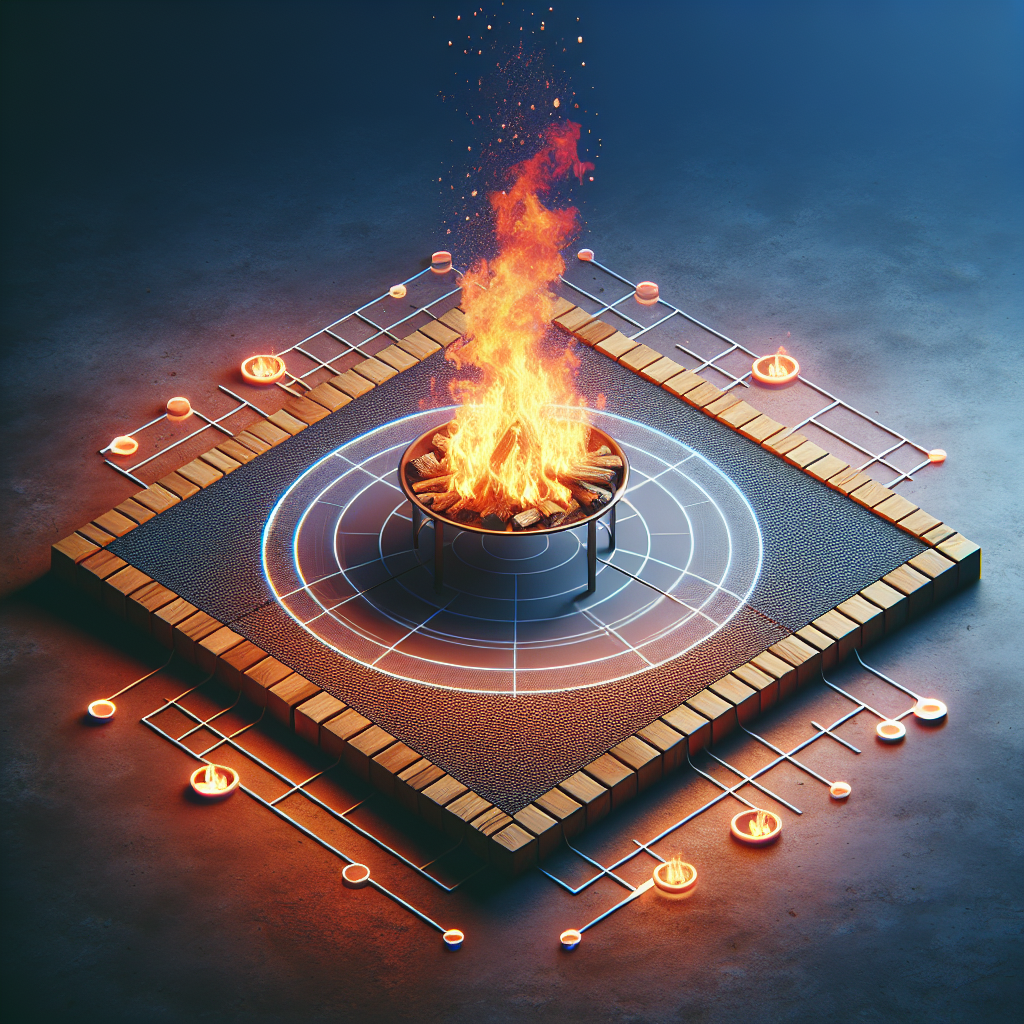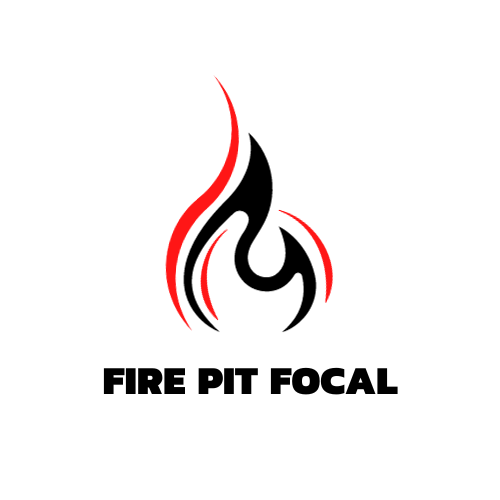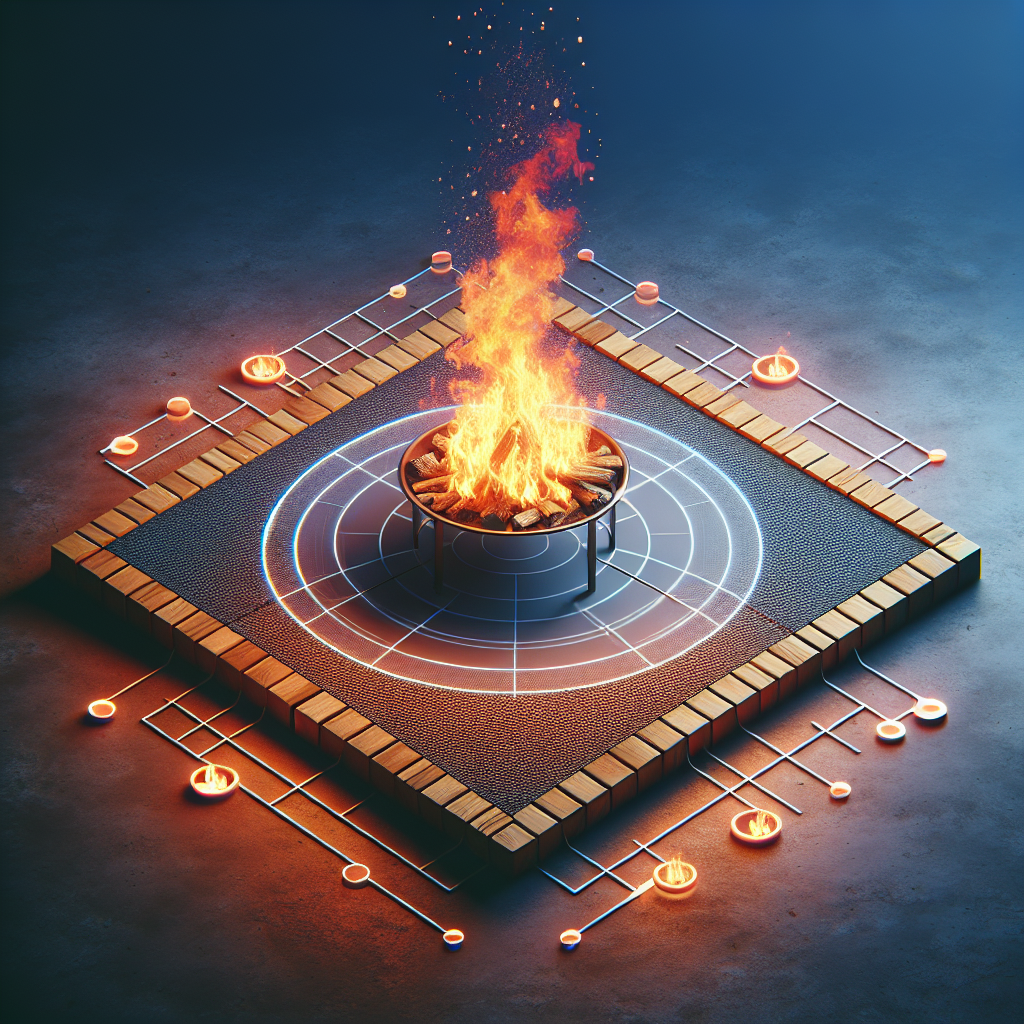If you enjoy spending your evenings around a cozy fire pit, you may have wondered how to protect the ground beneath it from heat damage. It’s important to ensure that the ground remains safe and undamaged, especially if you’re using your fire pit on grass or a wooden deck. In this article, we will explore some effective methods to safeguard the ground under your fire pit, allowing you to enjoy your outdoor gatherings worry-free.
Choosing the Right Location
Evaluating the Space
When it comes to choosing the perfect location for your fire pit, it’s important to carefully evaluate the space in your backyard. Look for an area that is spacious enough to accommodate the size of your fire pit and allows for comfortable seating for you and your guests. You should also consider any nearby structures, such as your house or fences, and make sure there is enough clearance to prevent any potential accidents.
Keeping Away from Flammable Materials
It is crucial to ensure that your fire pit is positioned away from any flammable materials. Keep it at a safe distance from things like shrubs, trees, and overhanging branches that could potentially catch fire. Additionally, avoid placing your fire pit on wooden decks or near wooden structures, as this can increase the risk of heat damage and fire hazards.
Checking for Local Regulations
Before installing a fire pit in your backyard, it is vital to check with your local authorities regarding any regulations or restrictions. Some areas may have specific guidelines regarding the size, type, and placement of fire pits. By doing your due diligence and following these regulations, you can ensure both the safety of your property and compliance with local laws.
Preparing the Ground
Clearing the Area
Once you have chosen the ideal location, the next step is to clear the area where you plan to install your fire pit. Remove any debris, such as leaves, sticks, or grass, to create a clean and safe space for your fire pit. This will help prevent these materials from catching fire and spreading potentially dangerous flames.
Creating a Fireproof Base
To protect the ground under your fire pit from heat damage, it is essential to create a fireproof base. This can be done by placing a layer of heat-resistant material, such as fire bricks or pavers, underneath the fire pit. These materials are designed to withstand high temperatures and will provide a barrier between the fire and the ground, preventing any heat-related damage.
Removing Vegetation
Before setting up your fire pit, it is important to remove any vegetation, including grass, from the surrounding area. Vegetation can be highly flammable and can easily catch fire if exposed to heat from the fire pit. By removing it, you eliminate the risk of accidental fires starting and ensure a safer environment for everyone enjoying the fire pit.
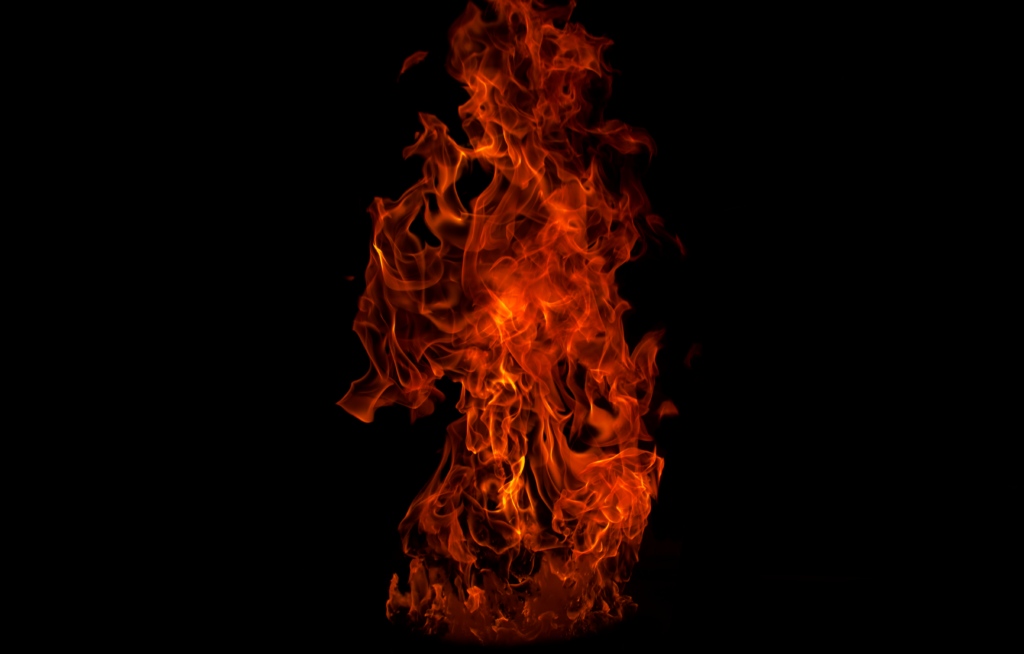
Using Heat-Resistant Materials
Fireproof Pavers or Bricks
One effective way to protect the ground under your fire pit is by using fireproof pavers or bricks. These heat-resistant materials can withstand intense temperatures without transferring the heat to the ground beneath. By creating a solid base with fireproof pavers or bricks, you can enjoy your fire pit without worrying about damaging the ground.
Concrete Slab or Heat Shield
Another option to consider is placing your fire pit on a concrete slab or using a heat shield. A concrete slab acts as a protective barrier between the fire and the ground, preventing any heat damage. Heat shields, on the other hand, are specifically designed to reflect heat away from the ground, ensuring that no damage occurs.
Fireproof Ground Cover
If you prefer a more natural look for your fire pit area, you can also consider using fireproof ground cover. There are various options available, such as lava rock or fire glass. These fireproof materials not only create an aesthetically pleasing base but also provide excellent heat resistance, ensuring that the ground beneath your fire pit remains protected.
Using Heat-Reflective Materials
Reflective Heat Shields
Using reflective heat shields is another effective way to protect the ground under your fire pit. These shields are designed to reflect heat back towards the fire pit, preventing it from reaching the ground and causing damage. By installing a reflective heat shield, you can enjoy your fire pit without worrying about any heat-related issues.
Aluminum or Stainless Steel
Consider using aluminum or stainless steel as materials for your fire pit. These metals have excellent heat conductivity properties, meaning they absorb and distribute heat evenly. By using them, you reduce the risk of heat damage to the ground, as they can effectively manage the thermal energy produced by the fire.
Fire Pit Mats or Pads
Fire pit mats or pads are specifically designed to protect the ground from heat damage. These mats are made from fire-resistant materials and can withstand high temperatures without transferring heat to the ground. By placing a fire pit mat or pad beneath your fire pit, you create a protective barrier that prevents any potential damage to the ground.
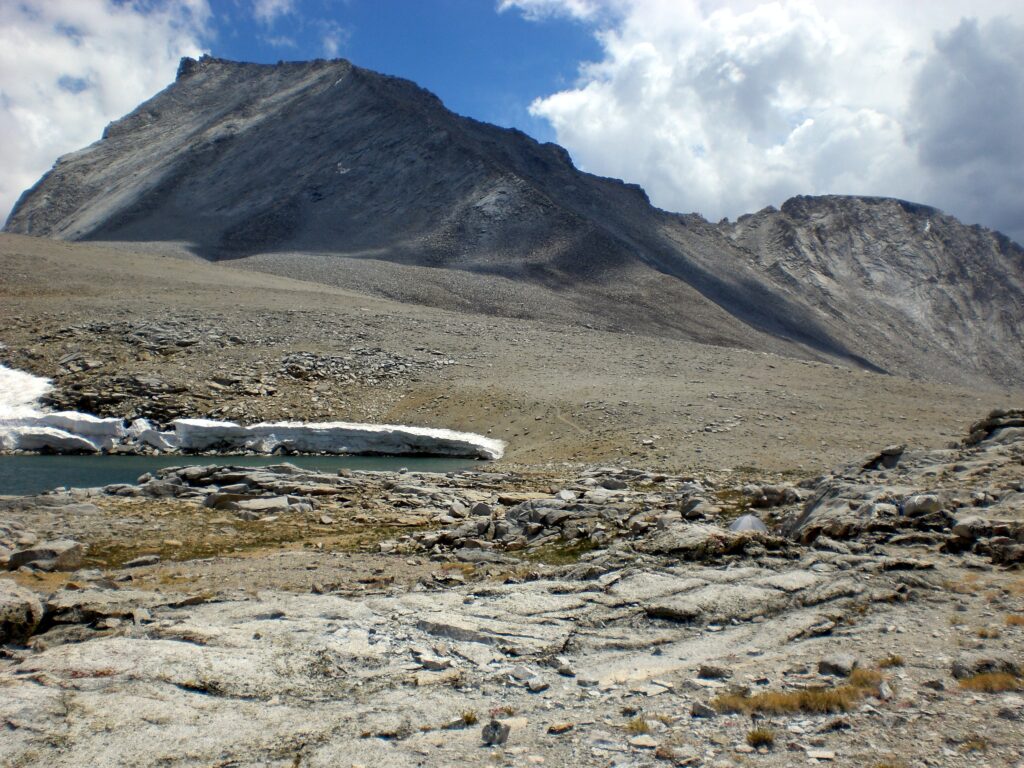
Implementing Protective Layers
Sand Layer
One common method to protect the ground under your fire pit is by using a layer of sand. The sand acts as an insulating barrier, preventing the heat from the fire pit from reaching the ground. It also helps distribute the heat evenly, reducing the risk of localized heat damage. Be sure to choose sand that is free of moisture, as damp sand can retain heat and potentially cause damage.
Gravel or Crushed Stone
Another protective layer option is to use gravel or crushed stone. These materials are highly heat-resistant and can effectively dissipate heat, acting as a buffer between the fire pit and the ground. By spreading a layer of gravel or crushed stone under your fire pit, you create an additional protective layer that helps prevent heat damage.
Fire Pit Heat Deflector
A fire pit heat deflector is a device specifically designed to redirect the heat produced by the fire away from the ground. It usually consists of a metal plate or shield that is placed between the fire pit and the ground. By installing a heat deflector, you can ensure that the ground remains safe from heat damage, keeping your fire pit area secure.
Considering Fire Pit Screens
Spark Arrestor Screens
One important safety measure to consider is the use of spark arrestor screens. These screens are designed to prevent sparks and embers from escaping the fire pit and potentially causing fires. By installing a spark arrestor screen, you minimize the risk of accidental fires and ensure a safer environment around your fire pit.
Ember Screens
Ember screens serve a similar purpose to spark arrestor screens but focus specifically on preventing embers from escaping the fire pit. Embers can travel long distances and ignite nearby flammable materials, posing a significant fire hazard. By using an ember screen, you protect against this risk, providing an added layer of safety.
Heat Deflector Screens
Heat deflector screens are screens designed to redirect the heat away from the surrounding area and the ground. They act as a barrier that absorbs and reflects heat, protecting the ground from any potential heat damage. By using a heat deflector screen, you can enjoy the warmth of your fire pit while ensuring the safety of the ground beneath.

Using Fire Pit Bases
Heat-Resistant Fire Pit Pads
Using heat-resistant fire pit pads can provide an additional layer of protection for the ground under your fire pit. These pads are made from fireproof materials that can withstand high temperatures without transferring heat to the ground. By placing a heat-resistant fire pit pad beneath your fire pit, you add an extra measure of safety and peace of mind.
Cement Patio Tiles
Cement patio tiles are an excellent choice for creating a fire pit base. Cement is highly fire-resistant, and by using patio tiles, you can effectively protect the ground from heat damage. These tiles also provide a sturdy and durable foundation for your fire pit, ensuring long-lasting protection and stability.
Outdoor Fire Pit Rugs
If you are looking for a more decorative option, consider using outdoor fire pit rugs as a base for your fire pit. These rugs are made from fire-resistant materials and are specifically designed for outdoor use. By placing an outdoor fire pit rug beneath your fire pit, you add both style and an additional layer of protection to the ground beneath.
Additional Safety Measures
Applying Non-Flammable Primer
To further protect the ground under your fire pit, you can apply a non-flammable primer to the area surrounding the fire pit. This primer creates a fire-resistant barrier, minimizing the risk of heat damage to the ground. Be sure to select a primer that is specifically designed for outdoor use and follow the manufacturer’s instructions for proper application.
Using Lava Rocks or Fire Glass
Lava rocks or fire glass can be used as decorative materials for your fire pit, but they also serve a functional purpose. These materials are highly heat-resistant and can effectively protect the ground from the intense heat generated by the fire pit. By using lava rocks or fire glass, you add an extra layer of protection while enhancing the aesthetic appeal of your fire pit.
Regular Inspection and Maintenance
To ensure the ongoing safety of your fire pit and the ground underneath, it is crucial to conduct regular inspections and perform any necessary maintenance. Check for any signs of damage, such as cracks in the fire pit or deterioration of the protective layers. Address any issues promptly and follow the manufacturer’s recommendations for maintenance to ensure optimal performance and safety.
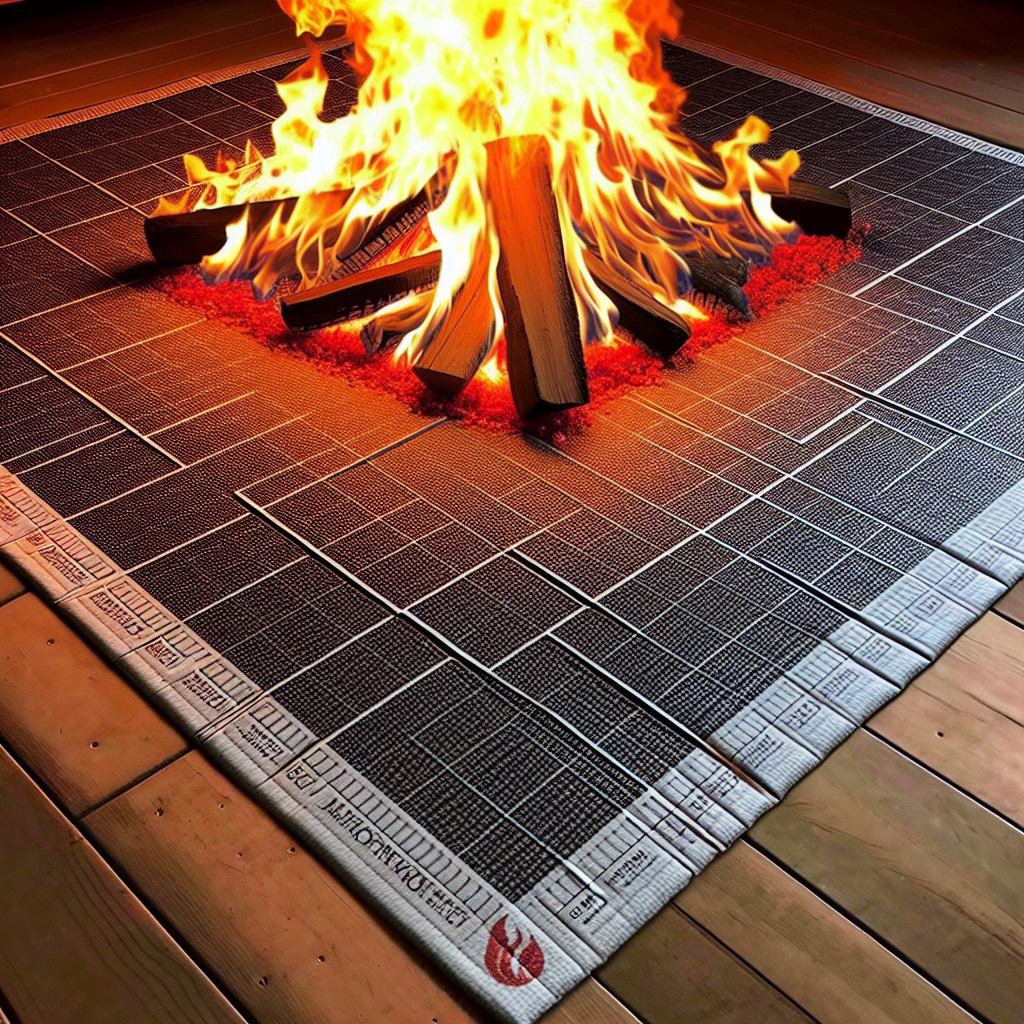
Alternative Ground Protection Methods
Fire-Resistant Landscaping
One alternative method to protect the ground under your fire pit is through the use of fire-resistant landscaping. Choose plants, shrubs, and trees that have low flammability and are less likely to catch fire. Additionally, consider using rocks or gravel as ground cover instead of flammable materials. By implementing fire-resistant landscaping, you can create a safer environment around your fire pit.
Portable Fire Pit
Another option to consider is using a portable fire pit. These fire pits are designed to be easily moved, allowing you to change the location as needed. By regularly moving your fire pit, you can prevent long-term heat damage to the ground underneath. Portable fire pits also offer the flexibility of being used in different areas of your outdoor space.
Elevated Fire Pit
An elevated fire pit is a raised platform that houses the fire pit, keeping it off the ground. By elevating the fire pit, you eliminate direct contact with the ground and minimize the risk of heat damage. Additionally, an elevated fire pit provides better visibility and accessibility, making it a convenient and safe option for enjoying a cozy fire.
Conclusion
Protecting the ground under your fire pit from heat damage is essential for maintaining a safe and enjoyable outdoor environment. By choosing the right location, preparing the ground, using heat-resistant and heat-reflective materials, implementing protective layers, considering fire pit screens and bases, and taking additional safety measures, you can prevent heat-related damage and ensure the long-term safety and functionality of your fire pit. Remember to regularly inspect and maintain your fire pit, consider alternative ground protection methods, and always prioritize safety when enjoying the warmth and ambiance of your fire pit.
